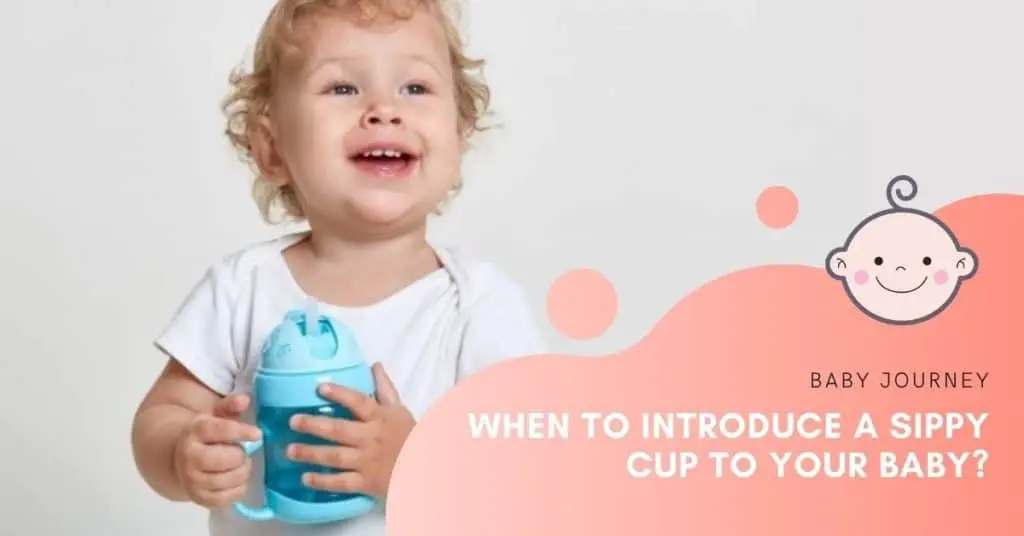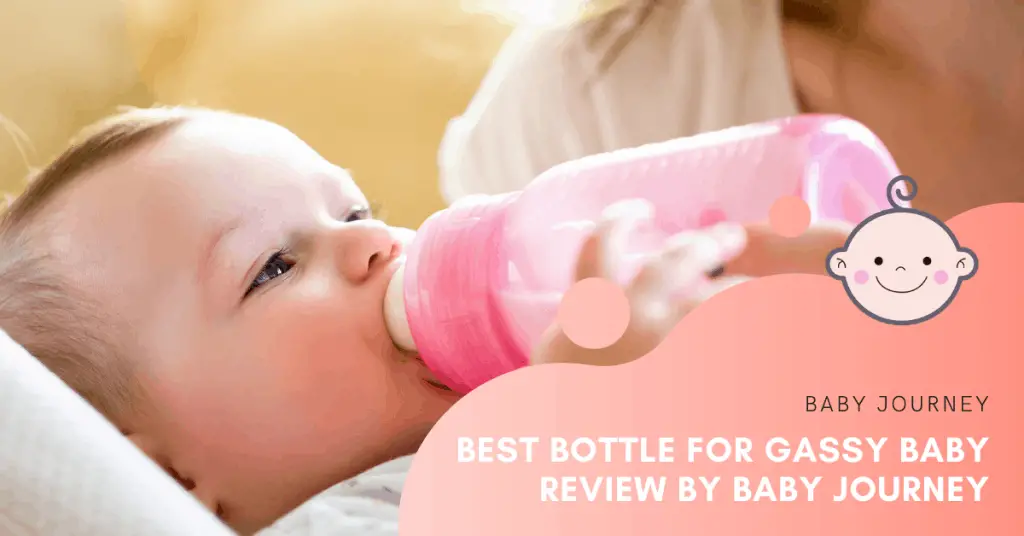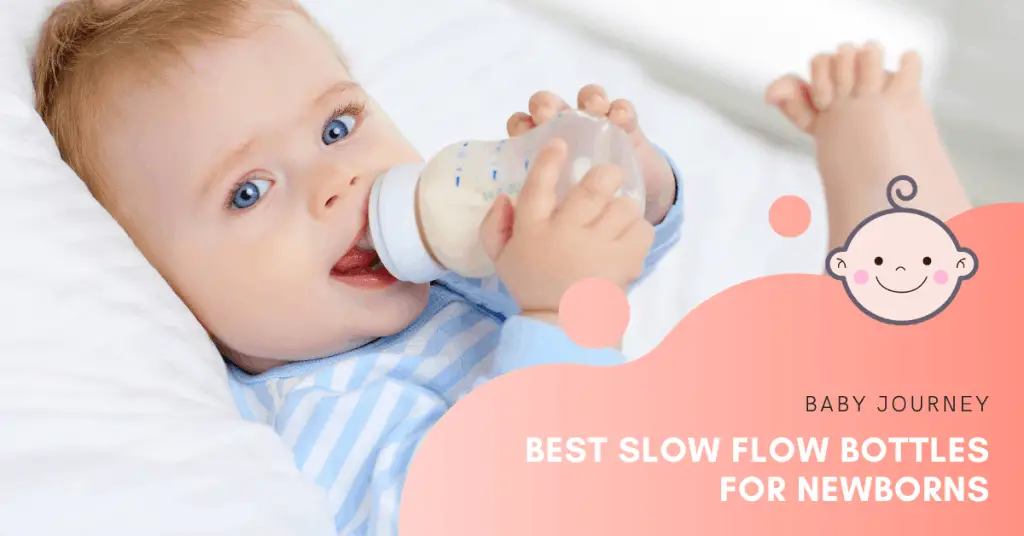A baby drinking from a sippy cup is simply adorable. I started introducing a sippy cup to my little one when she was about 8 months old. It certainly made my life easier since she was ready to start drinking like mommy, and I didn’t have to worry about her spilling whatever she was drinking.
If you’re wanting to introduce your little one to a sippy cup you may wonder, when can my baby use a sippy cup? Whether you’re breastfeeding or bottle-feeding your baby, you can start to introduce a sippy cup when your baby is able to sit up on their own, usually around 6-9 months of age.
In this article, I’ll be discussing when to introduce a sippy cup, some tips on how to teach your baby to use a sippy cup, and sippy cup recommendations for an easier introduction. So read on to find out!
- What Is A Sippy Cup?
- Why Should Your Baby Transition From Bottle to Sippy Cup?
- When To Introduce A Sippy Cup?
- How To Introduce A Sippy Cup To A Baby: 7 Effective Tips Parents Can Apply
- Best Sippy Cups For Starters
- What To Do If Your Baby Refuses Sippy Cup
- What Can I Use Instead Of A Sippy Cup? Sippy Cup Alternatives
- FAQs
- Conclusion
What Is A Sippy Cup?
A sippy cup is designed so that babies can drink liquids without spilling. Sippy cups usually are made out of plastic, often with handles that baby can easily hold, and a lid with either a straw or a spout.
Most sippy cups are leak-proof so that when baby turns it upside down, tosses it around, or leaves it lying in forgotten places you won’t find a puddle. I know how gross it is to find a puddle of milk a few days later when it has started to smell.
Sippy cups come in four different types: hard spout, soft spout, straw, and flat lid (or 360). Soft spouts are the closest to a bottle with a soft silicone nipple-like spout and are great for younger babies. Once your baby gets teeth and is in a biting phase, use a hard spout so those tiny teeth won’t break the spout off and cause a choking hazard.
Straw sippies are great for older babies who are able to drink out of a straw. If you want your baby to learn to drink from a regular cup, flat lid sippies are your best option.

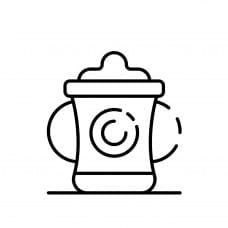




Why Should Your Baby Transition From Bottle to Sippy Cup?
Sippy cups are not necessary, but if you want to start weaning your baby off of a bottle they’re helpful. They make the transition from bottle to regular drinking cup smoother.
Whether you’re bottle or breastfeeding, introducing a sippy cup can help your baby understand that liquid comes from other sources than the breast or bottle. If you’re like me and your baby starts showing an interest in whatever you’re drinking, it’s a great way to let your little one imitate you without a mess.
Aside from that, transitioning to a sippy cup has good benefits for your child’s teeth development. Using bottles for a long time can increase tooth decay because sugars stay longer on the surface of the teeth. It can affect the development of the teeth because sucking can lead to overbites and crooked teeth over time.
Bottles can also lead to a higher obesity rate if used beyond two years of age as children who are dependent on bottles get used to sipping frequently throughout the day, which causes them to take in too many calories.
When To Introduce A Sippy Cup?
There’s no hard-and-fast rule that says when your baby can start using a sippy cup, but generally the best sippy cup age is between 6 and 12 months of age.
I started at 8 months, but that doesn’t mean you have to. Every baby is different. Most experts and doctors recommend 9 months [1], but you can start as soon as you introduce your baby to solid food. Even if you’re breastfeeding it can be helpful to introduce water in a sippy cup at the same time.
The best way to tell if your baby is ready for a sippy cup is to look for signs that they are ready. These signs include:-
- sitting up without support
- the ability to hold and drink from a bottle on their own
- eating solid foods
- reaching for your cup
Babies under 6 months should not use a sippy cup. They are not developmentally ready to use one at that age. A baby under 6 months needs to suckle from a breast or bottle nipple as it helps develop their swallow reflex and oral motor control. Before 6 months, babies are not able to take a sip and swallow.
Whether you start your baby on a sippy cup at 6 or 9 months or somewhere in between, it’s best to break the bottle habit by the time your baby is 12-15 months old. It will be harder to transition after that, and will form bad habits.
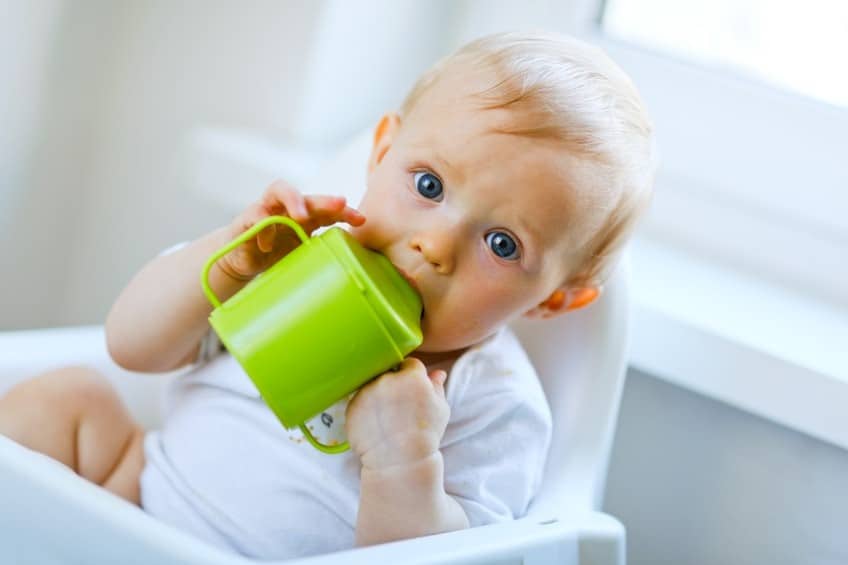
How To Introduce A Sippy Cup To A Baby: 7 Effective Tips Parents Can Apply
Transitioning to a sippy cup is a new event, and this change can be uncomfortable for babies, especially since they were so used to bottles or teats for some time. Here are some tips to make it easier to introduce sippy cups to your child:
- Start sippy cup training early
While you shouldn’t let your baby drink out of a sippy cup before 6 months of age, you can introduce the sippy cup early by letting your baby play with the empty cup. Letting baby play with the empty sippy cup allows them to get used to how it looks and feels, and even tastes.
- Introduce sippy cup at mealtimes
Introducing the sippy cup when baby is hungry helps them to get used to it. If your baby is interested in solid foods, adding in the sippy cup will help them get acclimated to it.
- Try different liquids in sippy cup
Water is great for your baby, but when they’re starting out with the sippy cup, water can be boring. Start out with breastmilk of formula (or cow’s milk if your baby is over a year old), and gradually switch to water. Juice isn’t recommended for babies under a year old, and only ½ cup per day is recommended for toddlers.
- Avoid drinking on the move
A lot of injuries happen to babies who drink on the go. Don’t let your little one walk or crawl around with the sippy cup. Instead, limit sippy cup use to when your baby is seated at the table or in a specific spot.
- Offer sippy cup in the morning
Babies are more receptive to new things when they’re hungry or thirsty, so a good time to start on a sippy cup is in the morning after baby has woken up and is thirsty.
- Give small volume to drink
Start with only a few ounces of liquid at a time to get your baby used to the sippy cup, and to prevent your baby from getting too full.
- Make sipping sessions fun
You don’t want your baby to think that drinking from a sippy cup is a scary experience, so make sure to have fun and celebrate when your baby can drink from the sippy cup.
Best Sippy Cups For Starters
Different babies may have different preferences but I find these four sippy cups to be among the best to introduce to your baby:
Best Sippy Cup for New Learners: NUK Simply Natural Learner Cup

The NUK sippy cup has a soft, wide spout that is closer to the feel of sucking on a breast or bottle, and features an “anti-colic” vent that helps prevent your baby from sucking in too much air when drinking.
Best Straw Sippy Cup: Munchkin Any Angle Straw Trainer Cup

This straw sippy cup dispenses liquid from any angle, and has a flip-top lid that clicks closed to prevent leakage.
Best Transitional Sippy Cup: Sprout Ware Sippy Cup
This Green Sprouts sippy cup is great for a variety of ages with its interchangeable parts that grow with your baby. It is made out of double-walled stainless steel to insulate drinks and is free from harmful chemicals. You can get this cool sippy from HoneyBug.
Best Flat Top: Munchkin Miracle 360 Trainer Cup

This flat-top sippy cup is virtually spill-proof with its self-sealing top. It’s BPA free and has easy-grip handles.
- Promotes easy drinking transition from breast to bottle to independent feeding
- Spout is 45% wider for a more natural feel, allowing baby to grow with the NUK Simply Natural platform of natural feeding
- Cup features ergonomic, easy to hold handles, spill-proof, soft silicone spout, Anti-Colic Air Vent that helps reduce swallowing air
- Weighted straw and easy-to-hold handles allow your toddler to hold the cup at any angle
- 7 ounce capacity for water, milk or juice. Includes straw brush for easy cleaning
- Flip-top lid covers straw while on the go
- Set of (2) 7 ounce toddler cups with dentist recommended spotless design
- Shades may vary, you may receive bright blue/green or light blue/green
- 360 degree drinking edge eliminates spills completely
What To Do If Your Baby Refuses Sippy Cup
If your baby doesn’t take to the sippy cup right away, don’t give up. Your baby needs time to adjust to a new skill.
Try taking a few days off from the sippy cup, then bring it back. Give your baby plenty of encouragement when they succeed in any aspect of drinking from the sippy cuppy, even if it is just holding it the right way.
What Can I Use Instead Of A Sippy Cup? Sippy Cup Alternatives
Many experts advise caution in using sippy cups, as they allow sugars to stay on baby’s teeth longer, causing cavities, and they restrict baby’s tongue and mouth movement. If you want an alternative to a sippy cup, try a no-spill straw cup like Tommee Tippee Sportee Toddler Cup, and switch to a regular cup as soon as possible.
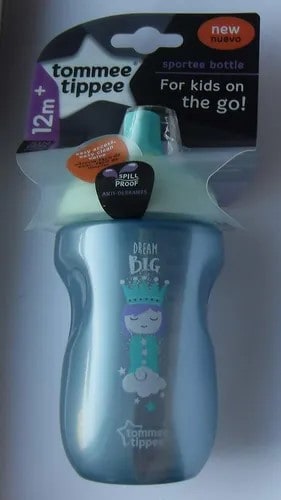
FAQs
Can you give formula in a sippy cup?
It’s fine to give your baby formula in a sippy cup. When starting out with a sippy cup, give your baby a portion of their milk in the sippy cup every day.
How do you transition from breast to sippy cup?
Start by letting your baby get used to holding the sippy cup until they learn to hold it correctly. Once they can do that, start teaching baby how to drink from the cup.
Can sippy cups mess up teeth?
Many dentists warn against using sippy cups too long or too often. They allow the sugars in milk or juice to cling to baby’s teeth, causing cavities. They can also cause malformation of baby’s hard palate which can lead to overbite and crooked teeth. On the whole, though, if you have to choose between sippy cup vs bottle, go with the sippy cup.
Are straw cups better than sippy cups?
Many doctors advise using straw cups over sippy cups. Straw cups allow babies to build up lip, cheek, and tongue strength, which are all helpful for speech development. [2] Sippy cups, on the other hand, prevent babies from learning how to lift the tongue to the top of the mouth, which is how adults drink and swallow.
When should my baby stop using a sippy cup?
Experts recommend that you stop using sippy cups by age 2. By that age children are developmentally ready to give up the sippy cup and exclusively use regular cups.
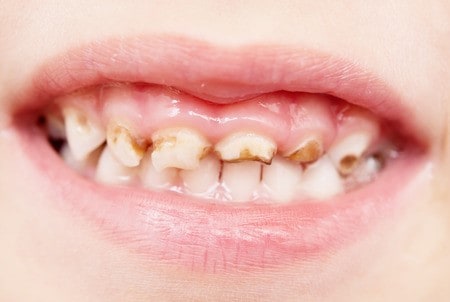
Conclusion
Whether you want to start your baby on a sippy cup or not is up to you – it’s not necessary for baby’s development – but if you do use one, be sure to wait until your baby is at least 6 months old, if not older. I started at 8 months, because that’s when my baby showed that she was ready.
If your baby is ready for the sippy cup, a little patience and encouragement goes a long way. Soon your little one will be drinking like a pro!
What are your thoughts on using a sippy cup? Do you have any tips or tricks? Please feel free to comment below if you have any questions, comments, or concerns.
—
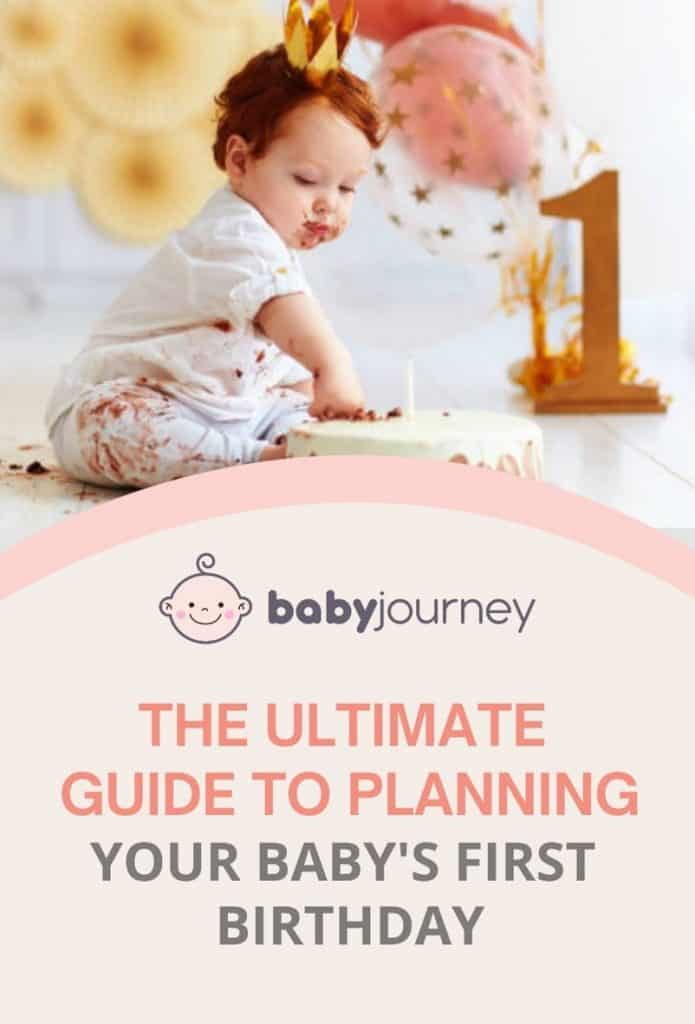
Last update on 2024-04-17 / Affiliate links / Images from Amazon Product Advertising API

